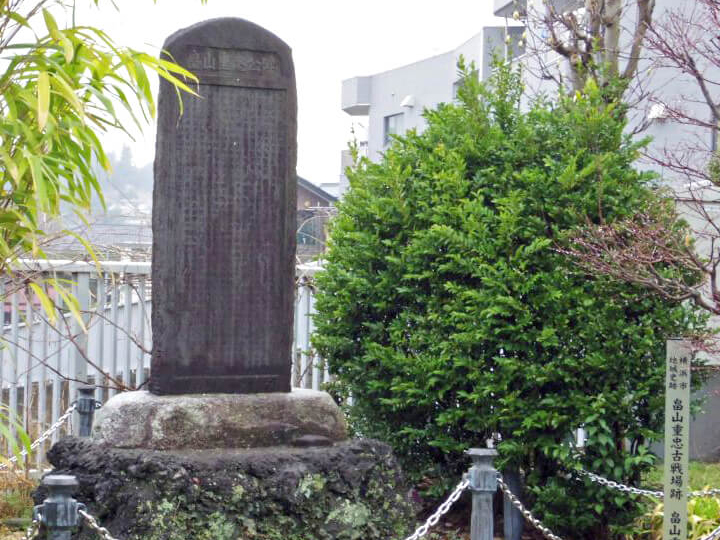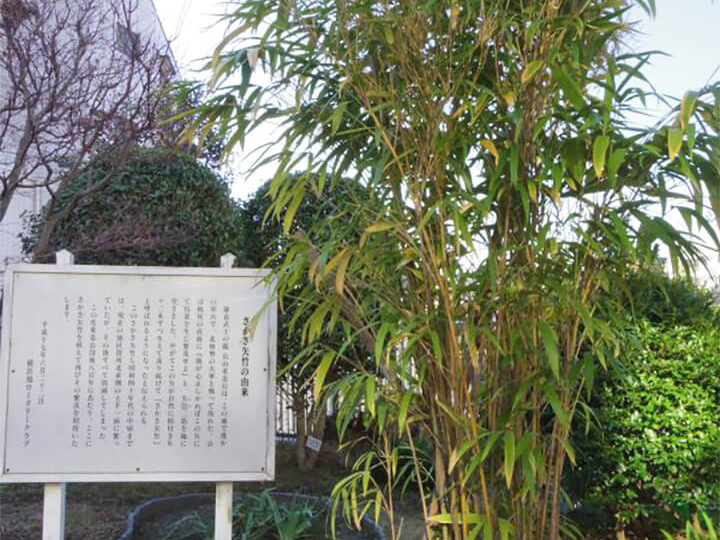Let's take a trip back to the Kamakura period
in Yokohama!
What's Hot
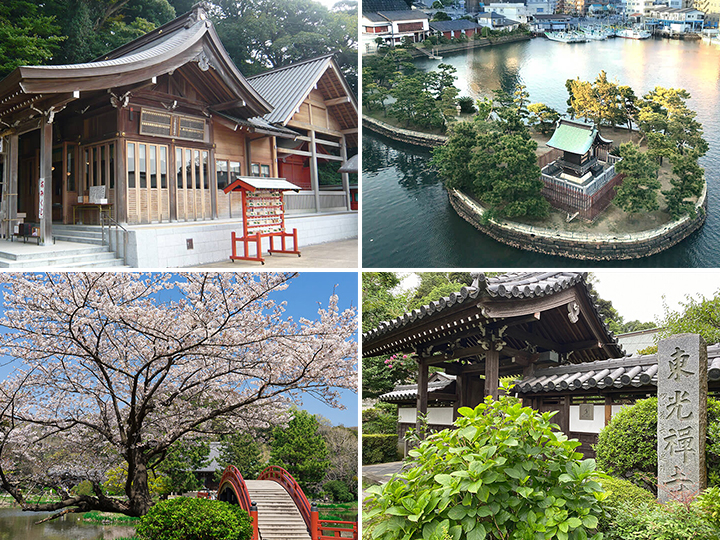
Many people may think that the history of Yokohama begins with the opening of its port.
In fact, Kanazawa-ku in Yokohama, flourished as Mutsura Minato, a port town adjacent to the Kamakura shogunate.
Asahi-ku is the place where Hatakeyama Shigetada, a general that performed well during the Kamakura period (1185-1333) and was also instrumental in the establishment of the shogunate, spent his last days.
Yokohama is home to many historical sites and stories associated to the Kamakura period.
This page features historical sites in Yokohama associated to the Kamakura Period, which is also the subject of NHK's 2022 historical TV series "The 13 lords of the Shogun".
- INDEX -
Places associated with Minamoto no Yoritomo
Places associated to Hojo Masako
Places associated with Minamoto no Noriyori
Place associated with Kazusanosuke Hirotsune
Places associated with Wada Yoshimori
Places associated to the Kanazawa Hojo Clan
Places associated with Minamoto no Yoritomo
Historic Sites associated to Minamoto no Yoritomo and Hojo Masako,
and the base of "Kanazawa Hojo Clan” in Yokohama
Touring around “Mutsura Minato”, a trading port since the Kamakura Period
There are shrines and other historical sites in Kanazawa-ku, Yokohama, associated with Minamoto no Yoritomo, who founded the Kamakura shogunate, and his wife Hojo Masako, and the area also prospered as Mutsura Minato, a port town adjacent to the shogunate.
The “Asaina Kiridoshi” passage was named after the third son of Wada Yoshimori (one of the retainers of the Kamakura shogunate), Asaina Saburo Yoshihide, who legend says opened the passage in one night, making it easier to transport goods from the inland sea and north of Edo from Mutsura to Kamakura.
Places associated with Minamoto no Yoritomo
The first shogun who won the Genpei War and founded the Kamakura shogunate. He seized power from the Imperial Court and established the first samurai government in history.
Seto Shrine
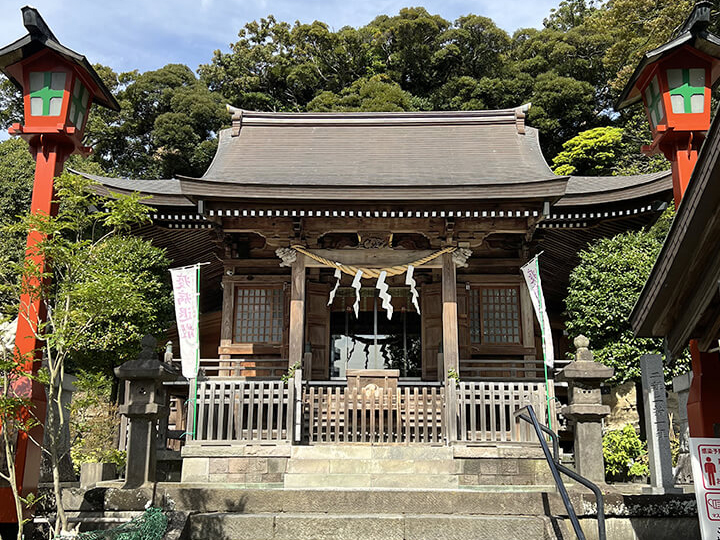
This place used to be a narrow strait and a chokepoint of marine traffic because of its rapid flow during low/high tide. So, the shrine was built and had been sacred to the god of the sea since 5th to 6th centuries. The Seto Shrine was originally dedicated to the Izu Mishima Myojin, to whom Minamoto no Yoritomo prayed for victory in battle when he raised his army. The shrine preserves many cultural properties from the Kamakura period (1185-1333). Worth noting are two masks for Court dances (the bato-men and Ryoh-men masks), said to have been used by Minamoto no Sanetomo and dedicated to his mother Hojo Masako, designated as national important cultural properties in 2000.
| Address | 18-14 Seto, Kanazawa-ku, Yokohama |
|---|---|
| Access | 2min. walk from “Kanazawa-hakkei Station” (Keikyu Main Line, Seaside Line) |
Tomioka Hachimangu Shrine
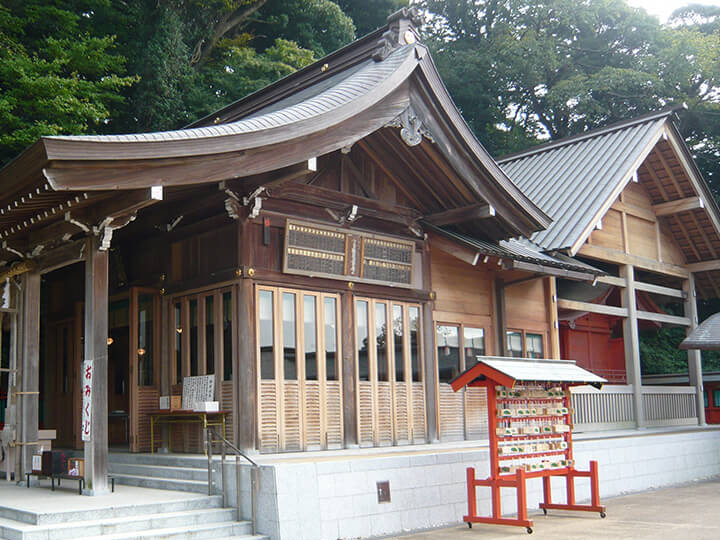
It is said that the shrine was built by Minamoto no Yoritomo in 1191 to shield Tomioka, which is in the northeast (unlucky) direction of Kamakura, and that a spirit of Hiruko-no-Mikoto from the Settsu Nishinomiya Shrine was invoked. This ancient shrine was founded around the same time as the Tsurugaoka Hachimangu Shrine in Kamakura.
| Address | 4-5-41 Tomioka-higashi, Kanazawa-ku, Yokohama |
|---|---|
| Access | 8min. walk from “Keikyu-Tomioka Station” (Keikyu Main Line) 10min. walk from “Namiki-Kita Station” (Seaside Line) 3min. walk from "Miyanomae" bus stop (Yokohama Municipal Bus Route 4) |
Ryugeji Temple
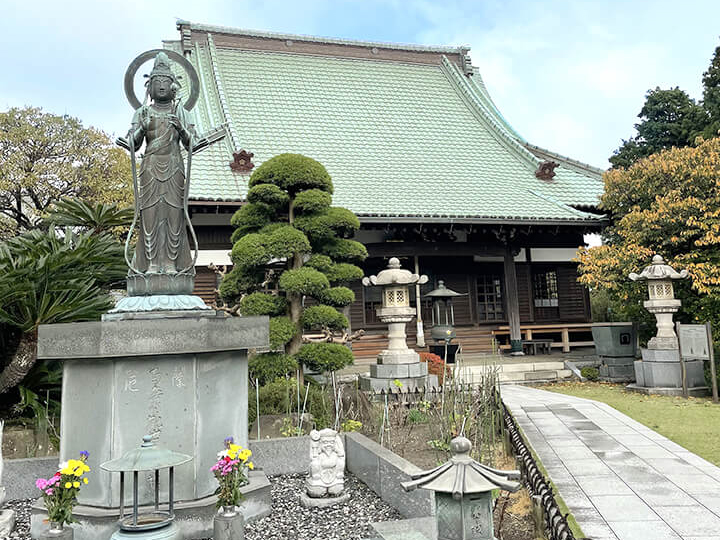
It is said that the temple was originally called "Zofukuji Temple" (later renamed “Joganji Temple”), founded by Minamoto no Yoritomo along Mongaku Shonin in the mountains of Mutsuura as a management temple for Seto Shrine after building it. In 1499, when warfare and fire devastated the Joganji temple complex, Yuben Shonin merged it with Kotokuji Temple, where he was also serving, and moved it to this location, where it became Ryugeji Temple.
It is also known as the temple of peonies, among other flowers.
| Address | 9-31 Suzaki, Kanazawa-ku, Yokohama |
|---|---|
| Access | 7min. walk from “Kanazawa-hakkei Station” (Keikyu Main Line) |
Places associated to Hojo Masako
Wife of Minamoto no Yoritomo and daughter of Hojo Tokimasa. Known as the "Midaidokoro" (name given to the shogun’s wife), she contributed to the establishment of the foundation of the Kamakura shogunate. After the death of Sanetomo, a shogun was appointed from the regents, and Masako became an acting shogun so-called "nun-shogun”.
Biwajima Shrine
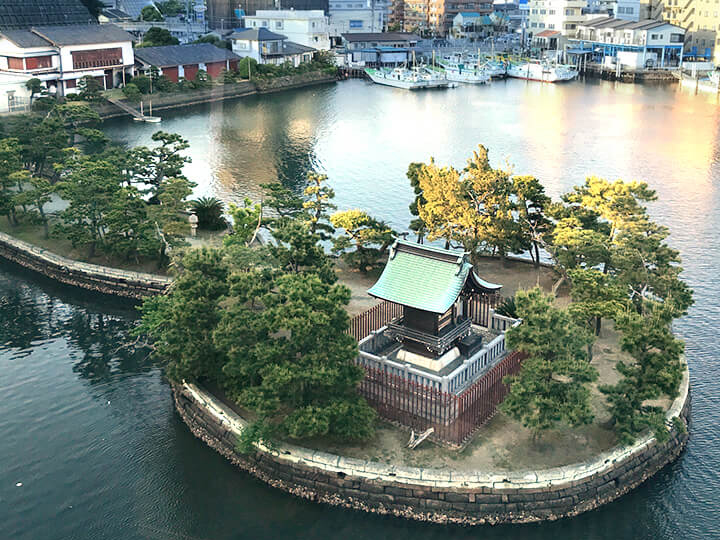
It is said that in 1180, when Minamoto no Yoritomo built Seto Shrine by invoking Mishima Myojin, his wife Hojo Masako followed in her husband's footsteps and invoked Chikubushima Benzaiten (the Goddess of Eloquence, Music, and Art), a deity of Lake Biwa that she worshiped regularly, and created the land by reclaiming the sea surrounding Seto Shrine and there founded the Biwajima Shrine.
| Address | 2 Seto, Kanazawa-ku, Yokohama |
|---|---|
| Access | 3min. walk from “Kanazawa-Hakkei Station” (Keikyu Main Line) |
Places associated with Minamoto no Noriyori
Half-brother of Minamoto no Yoritomo. He and Yoshitsune were appointed as generals in Yoritomo's army in the pursuit of Kiso Yoshinaka and the Taira clan. After the establishment of the Kamakura shogunate, he remained active as Yoritomo's brother, but was suspected of treason and was imprisoned and executed in Shuzenji, Izu in 1193.
Yakuoji Temple
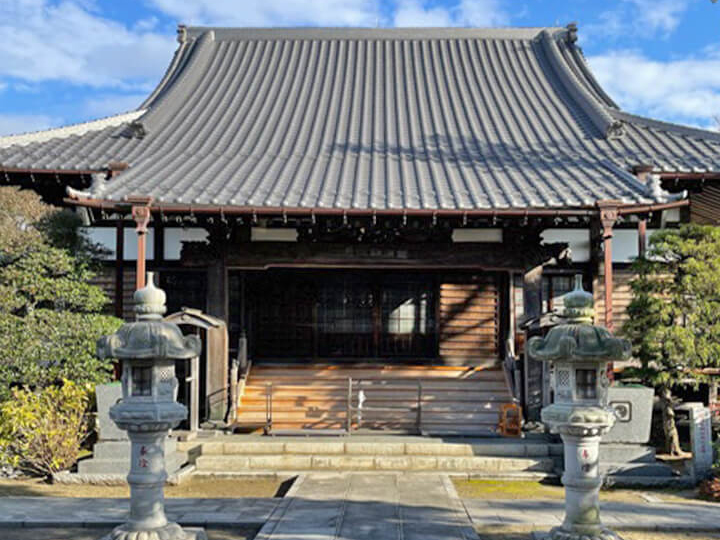
Minamoto no Yoritomo's younger brother, Minamoto no Noriyori, guardian of Mikawa region, committed suicide after being attacked by Kajiwara Kagetoki at Izu Shuzenji. This Shingon sect temple was built to mourn the soul of Minamoto no Noriyori in Segasaki, the site of his villa. The temple was first named “Yakushiji Temple”, but then after been rebuilt due to decay, it was renamed “Sanryozan Yakuoji Temple” as we know it nowadays. The main statue of Yakushi Nyorai is said to be the Buddhist image of Minamoto no Noriyori.
The temple houses a statue of Kannon Bodhisattva (Buddhist Goddess of Mercy) from the late Kamakura period, mandalas of Kongokai (Diamond Realm) and Taizokai (Womb Realm), and other ancient Buddhist ritual implements. A memorial tablet stands dedicated to Minamoto no Noriyori and “Mikawa mourning”, a memorial service, is held every year on the anniversary of his death, August 24.
| Address | 2-23-52 Teramae, Kanazawa-ku, Yokohama |
|---|---|
| Access | 5min. walk from “Uminokoen-Minamiguchi Station” (Seaside Line) 15min. walk from East Exit of “Kanazawa-bunko Station” (Keikyu Main Line) |
Taineiji Temple
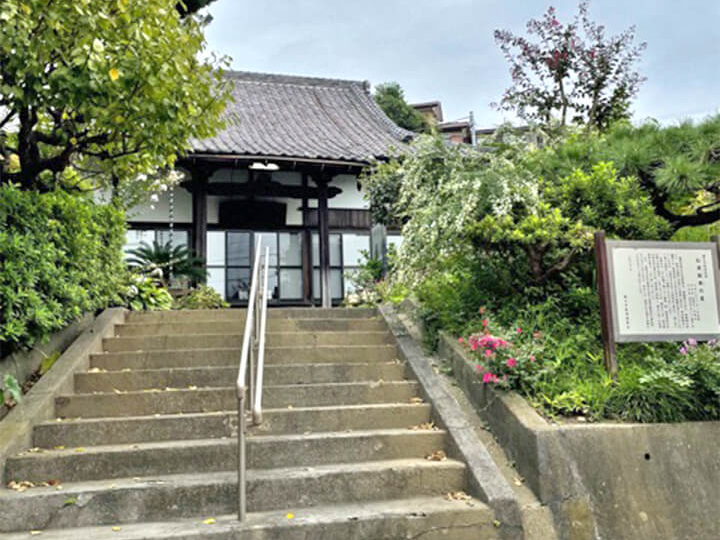
The predecessor of Taineiji Temple is said to be Yakushiji Temple of the Shingon sect, founded in Segasaki by Minamoto no Noriyori. Yakushiji Temple was relocated to the front of the temple and became the current Yakuoji Temple. In the Kamakura period (1185-1333), Taineiji Temple was established in honor of Noriyori's family name.
| Address | 61-5 Katabuki, Kanazawa-ku, Yokohama |
|---|---|
| Access | 15min. walk from “Kanazawa-bunko Station” (Keikyu Main Line) |
Place associated with Kazusanosuke Hirotsune
Kazusanosuke Hirotsune was the most powerful lord in the Bando region, and contributed greatly to the establishment of the Kamakura shogunate by leading 20,000 soldiers to Yoritomo's military camp. However, Yoritomo thought he had a bad attitude, and Kajiwara Kagetoki beheaded him.
Kazusanosuke-to Pagoda
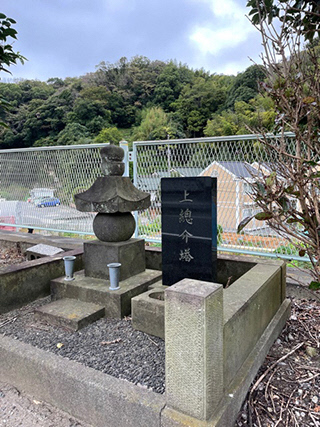
There are various theories as to which Kazusanosuke was the master of this pagoda, but local people believe that it was Kazusanosuke Hirotsune. The stone pagoda that stands by the road was restored by local volunteers in 1984.
| Access | A short walk from "Asahina" bus stop, riding from “Kanazawa-hakkei Station” (Keikyu Main Line or Seaside Line) |
|---|
Places associated with Wada Yoshimori
Wada Yoshimori was a samurai based in Wada, Miura-gun, Sagami Province. He participated in Minamoto no Yoritomo's military expedition to oust the Taira clan and conquer Oshu, and became the first director (betto) of the newly established Samurai Office. After Yoritomo's death, he participated in the council of the shogunate, and perished with his family in 1213 as a result of the Hojo clan's plan to exclude other clans.
Asaina Kiridoshi (Asaina Pass)
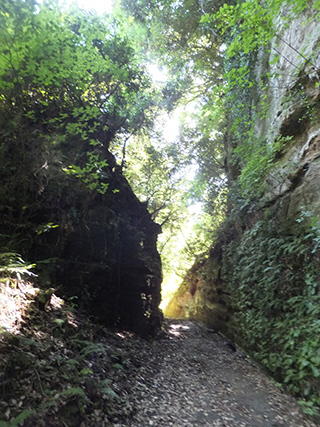
Named after the third son of Wada Yoshimori, Asaina Saburo Yoshihide, who legend says opened the passage by himself in one night. It is said that after the fall of the Wada clan, the Kamakura shogunate began to open this mountain passage, and the regent Hojo Yasutoki personally went to the site to supervise the work. Once this passage was opened, goods from the inland sea and north of Edo could be easily transported from Mutsuura to Kamakura.
Asaina Kiridoshi is one of the ancient passages that lead to Kamakura and was designated a national historic site.
| Access | 5min. walk from "Asahina" bus stop, riding from “Kanazawa-hakkei Station” (Keikyu Main Line or Seaside Line) |
|---|
Places associated to the Kanazawa Hojo Clan
Shomyoji Temple
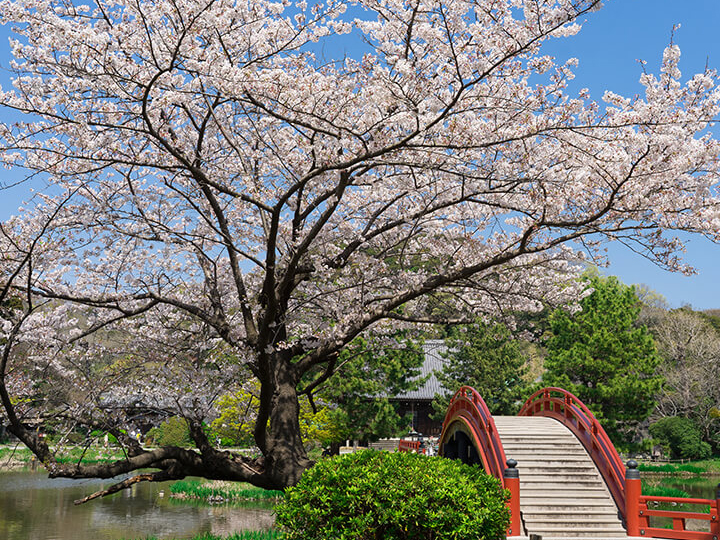
The family temple of the Kanazawa Hojo clan. It is said that it was originated from the Jibutsudo (Buddhist private hall) built by a key figure in the Kamakura shogunate, Hojo Sanetoki, in his residence in Mutsuraso, Kanazawa. During the reign of Sanetoki's grandson, Sadaaki, the temple reached its heyday as a large temple with a Buddhist monastery consisting of seven halls and a three-story pagoda.
It is a place of relaxation for visitors with beautiful seasonal scenery, including cherry blossoms in spring, yellow irises in early summer, and autumn leaves in fall. A firelit Noh play is usually held in the precincts of the temple at the beginning of May every year (the play will be held at another venue for 2022).
| Address | 212-1 Kanazawa-cho, Kanazawa-ku, Yokohama |
|---|---|
| Access | 10min. walk from “Uminokoen-Minamiguchi Station” or “Uminokoen-Shibaguchi Station” (Seaside Line) 12min. walk from “Kanazawa-Bunko Station” (Keikyu Main Line) |
Kanagawa Prefectural Kanazawa-Bunko Museum
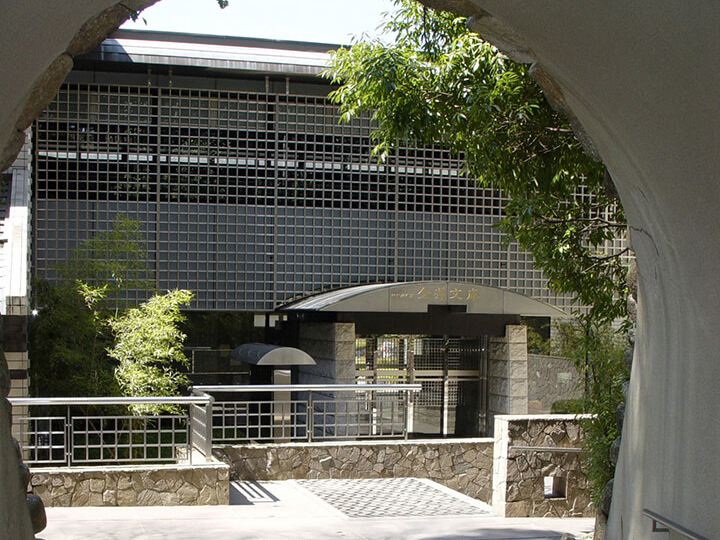
This museum has its origins in a samurai library built by Hojo Sanetoki, grandson of Hojo Yoshitoki, in his residence. The museum exhibits a number of sculptures, paintings, and old documents designated as national treasures and important cultural properties, and the interior of the Shomyoji Temple main hall has been reconstructed on the back of the first floor.
| Address | 142 Kanazawa-cho, Kanazawa-ku, Yokohama |
|---|---|
| Access | 12min. walk from “Kanazawa-bunko Station” (Keikyu Main Line) 10min. walk from “Uminokoen-Shibaguchi Station” (Seaside Line) |
Touring around places in Yokohama associated to "Hatakeyama Shigetada, exemplary Kamakura Warlord”
There are many historical sites related to the warlord Hatakeyama Shigetada, mainly in Asahi-ku, Yokohama. In addition, a memorial service for Hatakeyama Shigetada is held every year on June 22 in Mutsutsuka at Yakuoji Temple, dedicating praises and Shigetada Bushi dance performances.
Places associated with Hatakeyama Shigetada
Hatakeyama Shigetada was a military commander active in the Kamakura period (1185-1333), who was trusted by Minamoto no Yoritomo (1567-1568), a feudal lord who was instrumental in establishing the shogunate. He was born during the heyday of the Taira clan in Hatakeyama, Fukaya City (formerly Kawamoto Town) in Saitama Prefecture, and had a residence in Ranzan Town. Shigetada is said to have fought alongside Minamoto no Yoshitsune against the Taira clan at Ichinotani and Yashima, and also performed well in the conquest of Oshu.
He was a great general known for being clean, honest, compassionate, and strong, and also excelled in the arts, combining "wisdom, humanity, and courage." However, he became embroiled in a power struggle in the shogunate, and on his way to Kamakura, he died heroically near what is now Tsurugamine, Asahi-ku, Yokohama.
Mutsutsuka (Yakuoji Temple)
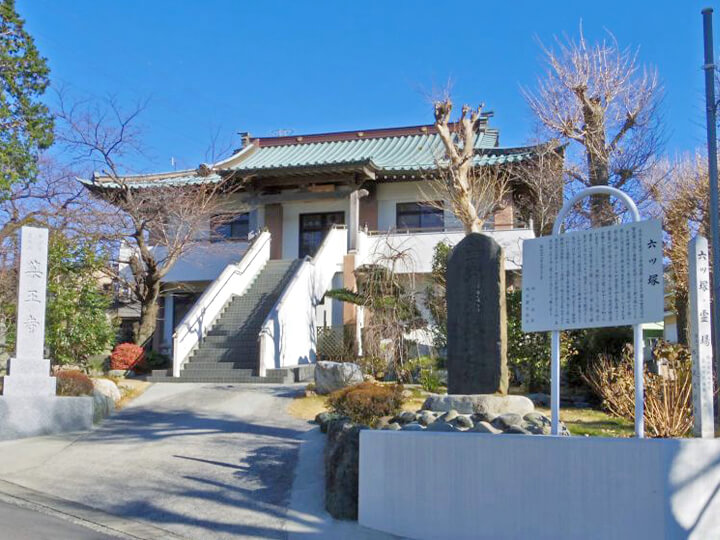
There are six mounds where Shigetada and 134 members of his family and clansmen are said to be buried. “Mutsutsuka” (six-mounded tomb) is located in the precincts of Yakuoji Temple, where Shigetada's soul is enshrined in a mausoleum.
| Address | 2-15-9 Tsurugamine Honcho, Asahi-ku, Yokohama |
|---|---|
| Access | 13min. walk from “Tsurugamine Station” (Sotetsu Main Line) |
Hatakeyama Shigetada's Head Mound
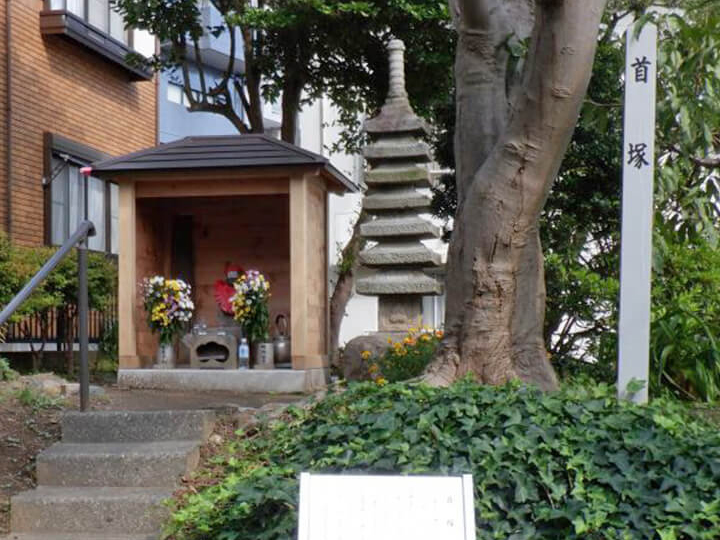
It is said that Shigetada's head was beheaded by Aiko Saburo Suetaka and this place was dedicated to him.
| Address | 1-3-7 Tsurugamine, Asahi-ku, Yokohama City |
|---|---|
| Access | 5min. walk from "Tsurugamine Station” (Sotetsu Main Line) |
Monument to Lord Shigetada and “Sakasa Yatake”
The monument was erected to commemorate the 750th anniversary of Shigetada's death. The bamboo growing next to it is called "Sakasa-yatake" in reference to the arrow that Shigetada pierced through the soil when he himself was hit by an arrow, saying: "If my heart is right, let this arrow produce branches and leaves that will thrive and grow”.
| Address | 1-1 Tsurugamine Honcho, Asahi-ku, Yokohama |
|---|---|
| Access | 6min. walk from “Tsurugamine Station” (Sotetsu Main Line) |
Palankin Mound of Hatakeyama Shigetada's Wife
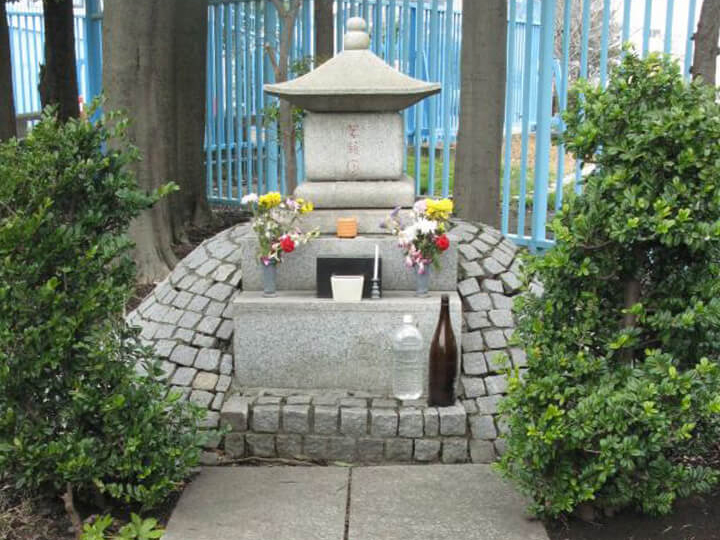
Grieving over her husband's death in battle, Shigetada's wife, Kikunomae committed suicide here. It is said that she was buried here along her palankin.
| Address | 2-39 Tsurugamine Honcho, Asahi-ku, Yokohama City |
|---|---|
| Access | 13min. walk from “Tsurugamine Station” (Sotetsu Main Line) |
Monument to the Legacy of Hatakeyama Shigetada
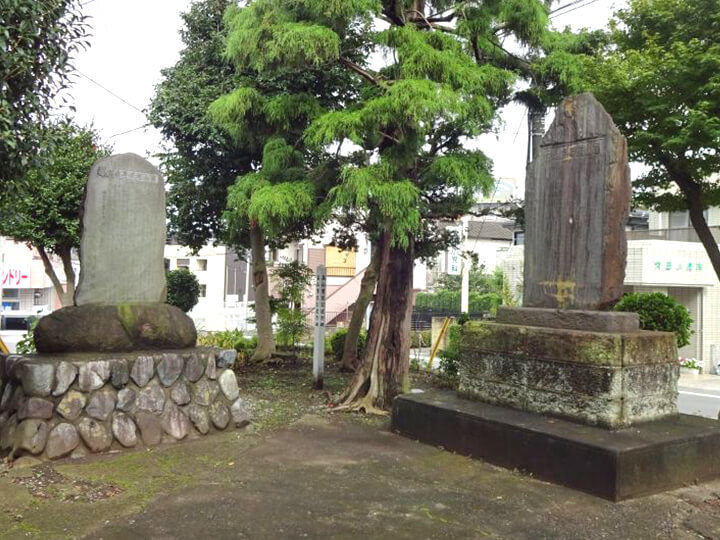
It was erected in 1892 by 57 local volunteers in honor of Shigetada. "Makigahara", the place where the monument stands, is named after the Hojo forces that encamped here with tens of thousands of cavalry to defeat Shigetada.
| Address | 104 Makigahara, Asahi-ku, Yokohama City |
|---|---|
| Access | 14min. walk from "Futamata-gawa Station” (Sotetsu Main Line) |
Tokozenji Temple
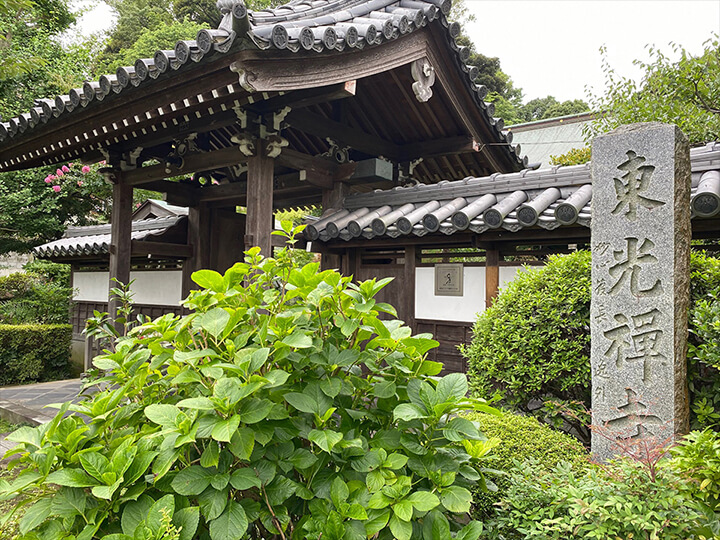
According to temple legend, the temple was established in 1282 by Hatakeyama Shigetada, inviting the sixth Zen master of Kenchoji Temple. The main deity is Yakushi Nyorai (Buddha of medicine and healing), which was Shigetada's principle deity of worship. It is attended by two Bodhisattvas, Nikko (Sunlight) on the left and Gekko (Moonlight) on the right, serving as flanking attendants, also guarded by twelve divine generals. There is a memorial pagoda for Hatakeyama Shigetada in the precincts of the temple as well.
| Address | 2-40-8 Kamariya-minami, Kanazawa-ku, Yokohama |
|---|---|
| Access | 25min. walk from “Kanazawa-bunko Station” (Keikyu Main Line) |

